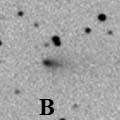
|
Now it is passing extremely near by the earth, remarkable approach after 76 years since its discovery in 1930, and in its best time to observe. Since early April, it has been experienced nuclear fragmentations and outbursts frequently, and it became bright as 5 mag in early May. Now it is brighter than the main component C. It is cometary, much larger than the component C with weaker condensation. Now two components, B and C, are visible bright at 6 mag. But all other fragments are very faint, fainter than 13 mag. The condition has been excellent for a long time, however, it will be getting lower and lower in the morning sky after mid May.
Date(TT) R.A. (2000) Decl. Delta r Elong. m1 Best Time(A, h)
May 20 23 15.49 13 36.3 0.083 0.979 64 5.9 3:13 (274, 31)
May 27 0 27.17 -0 38.2 0.126 0.955 59 6.7 3:07 (279, 12)
|
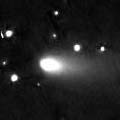
|
Now it is passing extremely near by the earth, remarkable approach after 76 years since its discovery in 1930, and in its best time to observe. It was bright as 6 mag in early May. Very strongly condensed, and the broad 1-2 degree long tail is clearly visible. It looks like a great comet and enjoyable to see. The condition has been excellent for a long time, however, it will be getting lower and lower in the morning sky after mid May.
Date(TT) R.A. (2000) Decl. Delta r Elong. m1 Best Time(A, h)
May 20 23 15.96 7 20.1 0.102 0.976 66 6.2 3:13 (280, 27)
May 27 0 20.13 -2 42.7 0.148 0.953 62 6.9 3:07 (282, 12)
|

|
Great outburst over 6 mag has occured always in recent appearances in 1995 and 2001. In this appearance, it started brightening rapidly after mid April, and it reached to 11.4 mag now (May 18, Juan Jose Gonzalez). Although it will not approach to the earth so much in this return, it keeps observable all through the period in the evening sky until autumn. It becomes brightest in June and too faint in autumn. It keeps locating around 30 degree high after this.
Date(TT) R.A. (2000) Decl. Delta r Elong. m1 Best Time(A, h)
May 20 8 18.77 25 10.8 1.090 1.093 62 11.4 20:40 ( 98, 36)
May 27 8 46.00 24 38.2 1.062 1.070 62 11.2 20:47 ( 98, 34)
|

|
Now it is passing extremely near by the earth, remarkable approach after 76 years since its discovery in 1930, and in its best time to observe. In addition to the two bright components, B and C, several dozens of fragments were discovered. However, none of them brightened much as expected. They are all very faint, fainter than 13 mag. All fragments are very unstable, suddenly brighten up to 12-15 mag but fade out rapidly within a few days. Some fragments can brighten unexpectedly and can become visible visually suddenly after this. So observations are encouraged. But unfortunately, the condition has been excellent for a long time, however, it will be getting lower and lower in the morning sky after mid May.
Date(TT) R.A. (2000) Decl. Delta r Elong. m1 Best Time(A, h)
May 20 23 14.05 16 3.9 0.077 0.981 64 11.3 3:13 (271, 32)
May 27 0 28.90 0 8.5 0.120 0.957 58 12.1 3:07 (278, 12)
|

|
It had been observed at 10 mag in the evening sky from winter to spring. But now it is not observable. It will appear in the morning sky again in late August at 13.5 mag. It will come to locate high in October, then it will be visible visually again at 14 mag.
Date(TT) R.A. (2000) Decl. Delta r Elong. m1 Best Time(A, h)
May 20 4 43.49 33 41.3 2.846 1.916 18 11.5 20:40 (132, 1)
May 27 5 5.34 34 11.8 2.919 1.973 17 11.7 20:47 (134, -1)
|
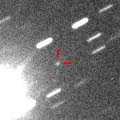
|
It is already bright and visible visually, 12.4 mag on May 4 (Seiichi Yoshida). It keeps 12 mag until July. The condition is best beucase it is almost at opposition at the perihelion passage. However, it will be very low, only 13-20 deg high, from June to September in the Northern Hemisphere. When it gets higher again, it will be fainter than 14 mag, too faint to see visually.
Date(TT) R.A. (2000) Decl. Delta r Elong. m1 Best Time(A, h)
May 20 19 8.12 -29 7.0 0.693 1.572 133 12.2 3:13 (359, 26)
May 27 19 17.79 -30 47.2 0.658 1.566 137 12.1 3:01 ( 0, 24)
|

|
Now it is 12.6 mag (May 4, Seiichi Yoshida). Diffuse visually. It had been originally expected to reach to 9 mag at best. However, the brightness evolution had been very slow, and actually it is much fainter than originally expected. But with a large telescope, it is still bright and enjoyable. It will be observable in good condition after this until autumn. It will be visible bright as 12 mag for a while.
Date(TT) R.A. (2000) Decl. Delta r Elong. m1 Best Time(A, h)
May 20 18 44.10 14 50.4 1.345 2.089 124 12.2 2:56 ( 0, 70)
May 27 18 17.38 19 53.1 1.358 2.146 129 12.3 2:02 ( 0, 75)
|
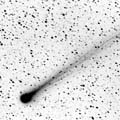
|
It reached to 5.2 mag at best in late February and early March. The fading had been slow in March, however, it turned to be fading rapidly in April. Now it is 11.9 mag (May 4, Seiichi Yoshida). Although it had been moderated condensed until early April, now it is very diffuse. In the Northern Hemisphere, it keeps observable in good condition until it fades out. It will be fading gradually in the morning sky after this. It will be fainter than 13 mag in late May.
Date(TT) R.A. (2000) Decl. Delta r Elong. m1 Best Time(A, h)
May 20 1 35.57 66 9.3 2.222 1.767 50 12.8 3:13 (207, 29)
May 27 1 53.67 67 14.7 2.335 1.872 51 13.3 3:07 (206, 29)
|

|
It brightened faster than a typical comet, and became visible visually as 13.5 mag in October (Oct. 24, Seiichi Yoshida). Now it is still bright as 13.6 mag (Apr. 17, Maciej Reszelski). Small and strongly condensed. It kept bright as 13.5 mag and observable in good condition for a long time. But it will be getting lower in the evening, and will be too low to observe in July. However, it will be observable in good condition again at 14.5 mag in next winter.
Date(TT) R.A. (2000) Decl. Delta r Elong. m1 Best Time(A, h)
May 20 9 53.75 45 14.1 5.327 5.200 77 13.9 20:40 (121, 59)
May 27 9 58.43 44 14.7 5.415 5.203 72 13.9 20:47 (119, 53)
|

|
It did not brighten so frequently in 2005. But it was often bright as 12-13 mag in early 2006. Now it is not observable. It will appear again at dawn in July. Then it will be observable in good condition in autumn and winter.
Date(TT) R.A. (2000) Decl. Delta r Elong. m1 Best Time(A, h)
May 20 3 10.53 25 59.4 6.802 5.809 10 13.9 3:13 (230, -8)
May 27 3 16.61 26 22.6 6.788 5.811 14 13.9 3:07 (232, -5)
|

|
Not yet observed in this return. The condition is worst in this time, not visible in the Northern Hemisphere at all. Now it is observable only in the Southern Hemisphere in the morning low sky. It is brightening very rapidly after this, however, it is also getting lower very rapidly. In mid June, it will be too low to observe when it reaches only up to 10 mag. So observations are very difficult even in the Southern Hemisphere.
Date(TT) R.A. (2000) Decl. Delta r Elong. m1 Best Time(A, h)
May 20 0 54.59 3 6.8 1.357 0.962 45 16.2 3:13 (269, 4)
May 27 1 34.44 7 8.2 1.310 0.861 41 14.6 3:07 (263, 2)
|

|
Although it was not observed in its last return in 1999, it will be observable in good condition after the periheliion passage in this return. It will reach to 14.5 mag from June to August. Now it is appearing at dawn.
Date(TT) R.A. (2000) Decl. Delta r Elong. m1 Best Time(A, h)
May 20 0 36.91 7 58.9 2.522 1.980 47 14.9 3:13 (267, 10)
May 27 0 49.61 10 32.1 2.465 1.976 50 14.8 3:07 (266, 13)
|

|
It was 16.6 mag on Apr. 21, brightening as expected. Although it is still low in the morning sky, it will be getting higher and brightening rapidly after this. It will be 14 mag and visible visually in June. It will reach to 8.5 mag from autumn to winter, and observable in its best condition. It keeps 14 mag still in 2007 April, so it keeps visible visually for a long time.
Date(TT) R.A. (2000) Decl. Delta r Elong. m1 Best Time(A, h)
May 20 23 8.54 1 59.4 2.516 2.369 69 15.2 3:13 (286, 24)
May 27 23 19.69 3 12.3 2.401 2.328 73 14.9 3:07 (286, 27)
|

|
In 2005 spring, it reached to 14 mag and became visible visually as 13.8 mag (July 8, Reinder J. Bouma). In 2006, it will be the same condition and brightness in summer again. Somewhat low in the south. But it will reach to 14 mag.
Date(TT) R.A. (2000) Decl. Delta r Elong. m1 Best Time(A, h)
May 20 22 26.76 -19 4.6 3.006 3.127 87 15.3 3:13 (310, 17)
May 27 22 32.59 -18 53.6 2.920 3.136 92 15.3 3:07 (312, 20)
|

|
It is unexpectedly bright as 15.5 mag on Apr. 2 (Ken-ichi Kadota). But it keeps very low until June. It will be getting higher after it starts fading. However, it has ever become a naked eye object in outburst, so observations are encouraged.
Date(TT) R.A. (2000) Decl. Delta r Elong. m1 Best Time(A, h)
May 20 23 9.88 -8 55.5 1.819 1.818 73 16.0 3:13 (294, 17)
May 27 23 23.41 -8 16.2 1.784 1.846 77 16.1 3:07 (295, 19)
|

|
It was fantastic, so bright as 3.5 mag, so large as 30 arcmin, locating high overhead at its best time in early 2004 January. Then it has been getting fainter gradually, and become already too faint to see visually. However, it is still bright as 15.8 mag by CCD observations (Mar. 30, Katsumi Yoshimoto). It keeps observable until October when it becomes fainter than 18 mag.
Date(TT) R.A. (2000) Decl. Delta r Elong. m1 Best Time(A, h)
May 20 16 35.36 3 21.2 4.853 5.778 153 16.0 0:47 ( 0, 58)
May 27 16 30.93 3 18.9 4.906 5.841 155 16.1 0:15 ( 0, 58)
|

|
It is outside of Jupiter's orbit, so it keeps observable for a long time. In 2006, it is still faint and locating somewhat low. But in 2007 and 2008, it is expected to be bright as 14.5-15 mag. It will locate high at that time, so it may be visible visually.
Date(TT) R.A. (2000) Decl. Delta r Elong. m1 Best Time(A, h)
May 20 20 20.01 -24 42.6 6.543 7.062 117 16.2 3:13 (340, 28)
May 27 20 15.97 -24 40.3 6.406 7.033 124 16.1 3:07 (346, 29)
|

|
It brightened faster than a typical comet, and it reached to 15.8 mag on Feb. 9 (Ken-ichi Kadota). It will be observable in good condition as 16 mag for a long time until next spring. It was too faint to see visually, fainter than 13.9 mag (Mar. 31, Seiichi Yoshida).
Date(TT) R.A. (2000) Decl. Delta r Elong. m1 Best Time(A, h)
May 20 10 30.59 58 10.3 5.129 5.032 78 16.4 20:40 (148, 59)
May 27 10 35.74 56 57.5 5.203 5.040 75 16.4 20:47 (143, 57)
|
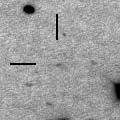
|
After it brightened rapidly in early April, it kept bright as 12 mag in April. However, it declined rapidly in late April. It was still visible at around 13 mag in early May, but extremely diffuse and hard to see. Now it is passing extremely near by the earth and in its best time to observe. However, it has already faded down to 16.5 mag on May 11 (Quanzhi). It may disappear soon. On the other hand, another outburst may occur and it may brighten again. The condition has been excellent for a long time, however, it will be getting lower and lower in the morning sky after mid May.
Date(TT) R.A. (2000) Decl. Delta r Elong. m1 Best Time(A, h)
May 20 23 15.40 15 4.1 0.079 0.980 64 16.4 3:13 (272, 32)
May 27 0 28.68 -0 10.3 0.123 0.956 59 17.2 3:07 (278, 12)
|
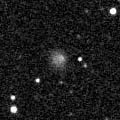
|
It had been an extremely faint Centaur asteroid until 2004, fainter than 21 mag. However, it brightened up to 17.5 mag on 2005 Dec. 30, and a coma was observed, then it was revealed to be a comet. It brightened furthermore, 14.8 mag on Jan. 7 (Ken-ichi Kadota). It was also visible visually at 14.4 mag (Jan. 8, Seiichi Yoshida). It still keeps bright as 15.7 mag on Apr. 16 (Mitsunori Tsumura). Now the condensation of the outburst looks separatedly from the nucleus. Because it is a temporary brightening in outburst, it will return to be so faint as 21 mag in the near future. It will pass the perihelion in 2015. The heliocentric distance reduces down to 5.9 A.U., but it will be 17 mag at best. However, another outburst may happen again in the future.
Date(TT) R.A. (2000) Decl. Delta r Elong. m1 Best Time(A, h)
May 20 12 59.55 -4 14.0 12.068 12.822 136 16.6 21:07 ( 0, 51)
May 27 12 58.57 -4 8.2 12.140 12.809 129 16.8 20:47 ( 3, 51)
|
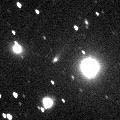
|
It had been observed at 16 mag by CCD, or 14 mag visually, in spring and summer in 2005. Now it is appearing again in the morning sky. It will be observable again at 16.5 mag in spring and summer in 2006. But the altitude will be somewhat lower than in 2005.
Date(TT) R.A. (2000) Decl. Delta r Elong. m1 Best Time(A, h)
May 20 19 42.93 -7 32.7 3.403 4.024 121 16.6 3:13 (345, 46)
May 27 19 39.55 -8 42.6 3.333 4.049 129 16.6 3:07 (354, 46)
|

|
It was 16.0 mag on Mar. 13 (Ken-ichi Kadota). It kept 16-16.5 mag for about one year from early 2005. It had been locating somewhat low for a while, but it will be higher after this. It keeps 17 mag until autumn when the condition becomes good.
Date(TT) R.A. (2000) Decl. Delta r Elong. m1 Best Time(A, h)
May 20 0 25.90 53 58.3 3.851 3.308 50 16.8 3:13 (224, 33)
May 27 0 34.90 54 3.7 3.842 3.325 52 16.8 3:07 (224, 35)
|
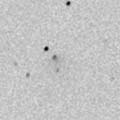
|
It is outside of Jupiter's orbit. So it keeps 16.5-17 mag for a long time. Because it moves in the northern sky, it keeps locating high and observable in good condition until 2006 summer.
Date(TT) R.A. (2000) Decl. Delta r Elong. m1 Best Time(A, h)
May 20 13 38.75 66 29.0 6.747 6.829 90 16.8 21:46 (180, 59)
May 27 13 32.02 65 26.7 6.794 6.834 87 16.8 21:12 (180, 60)
|

|
It has been lost since its discovery in 1986. The condition is good in this return. In calculation, it will be 14 mag from autumn to winter. However, it was probably in outburst and brightened unexpectedly at the discovery. So it can be much fainer than this ephemeris actually. In the Northern Hemisphere, it keeps observable until it fades out in next spring.
Date(TT) R.A. (2000) Decl. Delta r Elong. m1 Best Time(A, h)
May 20 18 24.54 -24 6.6 1.476 2.365 143 17.5 2:35 ( 0, 31)
May 27 18 22.35 -24 5.1 1.381 2.316 150 17.2 2:06 ( 0, 31)
|
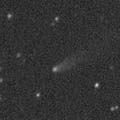
|
Although it was faint as 18 mag at the discovery in 2004 November, then it brightened very rapidly until early 2005, and reached to 16.0 mag on May 7 (Ken-ichi Kadota). After it appeared in the morning sky again, it continued brightening furthermore, and reached to 14.7 mag on Nov. 22 (Ken-ichi Kadota). It was also visible visually as 14.4 mag (Mar. 29, Maciej Reszelski). However, it already faded down to 16.6 mag by CCD observations (Apr. 20, Mitsunori Tsumura). In the Northern Hemisphere, it keeps observable in good condition until summer when it becomes too faint.
Date(TT) R.A. (2000) Decl. Delta r Elong. m1 Best Time(A, h)
May 20 13 19.26 12 18.8 2.315 3.082 131 17.2 21:27 ( 0, 67)
May 27 13 17.42 11 22.4 2.410 3.112 125 17.4 20:58 ( 0, 66)
|
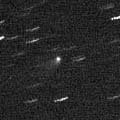
|
It was visible visually as 14.3 mag in 2005 spring (July 10, Edwin van Dijk). Now it is 16.6 mag (Feb. 5, Ken-ichi Kadota). Although it had kept 16.5 mag since December until early April, it will fade out rapidly after this, and become fainter than 18 mag in July.
Date(TT) R.A. (2000) Decl. Delta r Elong. m1 Best Time(A, h)
May 20 10 44.90 19 37.4 4.238 4.465 96 17.4 20:40 ( 64, 62)
May 27 10 40.70 19 16.3 4.408 4.504 88 17.6 20:47 ( 74, 54)
|

|
It reached to 13 mag and was observed visually in good condition in 2004 autumn. It has been not observable since August, but it is appearing at dawn again. It keeps 17 mag until late April. But it will go away soon after that. Next return is in 2018, when it will be 14.3 mag at best.
Date(TT) R.A. (2000) Decl. Delta r Elong. m1 Best Time(A, h)
May 20 12 26.79 4 49.6 3.799 4.459 125 17.6 20:40 ( 3, 60)
May 27 12 24.62 4 21.0 3.931 4.499 118 17.7 20:47 ( 20, 58)
|
|
![]()
 C/2005 E2 ( McNaught )
C/2005 E2 ( McNaught ) 71P/Clark
71P/Clark C/2004 B1 ( LINEAR )
C/2004 B1 ( LINEAR ) C/2006 A1 ( Pojmanski )
C/2006 A1 ( Pojmanski ) C/2003 WT42 ( LINEAR )
C/2003 WT42 ( LINEAR ) 29P/Schwassmann-Wachmann 1
29P/Schwassmann-Wachmann 1 45P/Honda-Mrkos-Pajdusakova
45P/Honda-Mrkos-Pajdusakova 102P/Shoemaker 1
102P/Shoemaker 1 4P/Faye
4P/Faye 117P/Helin-Roman-Alu 1
117P/Helin-Roman-Alu 1 98P/Takamizawa
98P/Takamizawa C/2004 Q2 ( Machholz )
C/2004 Q2 ( Machholz ) C/2005 L3 ( McNaught )
C/2005 L3 ( McNaught ) C/2004 D1 ( NEAT )
C/2004 D1 ( NEAT ) 73P-G/Schwassmann-Wachmann 3
73P-G/Schwassmann-Wachmann 3 174P/(60558) 2000 EC98 ( Echeclus )
174P/(60558) 2000 EC98 ( Echeclus ) C/2005 K1 ( Skiff )
C/2005 K1 ( Skiff ) C/2005 B1 ( Christensen )
C/2005 B1 ( Christensen ) C/2002 VQ94 ( LINEAR )
C/2002 VQ94 ( LINEAR ) D/1986 W1 ( Lovas 2 )
D/1986 W1 ( Lovas 2 ) P/2004 VR8 ( LONEOS )
P/2004 VR8 ( LONEOS ) C/2004 K1 ( Catalina )
C/2004 K1 ( Catalina ) (944) Hidalgo
(944) Hidalgo![]()



















